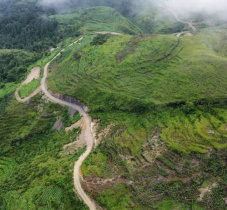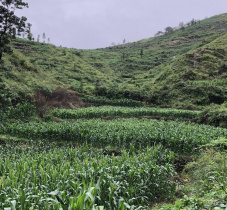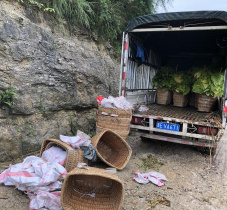Project description
This major reforestation project helps communities in Guizhou province to restore ecosystems and improve their living conditions. Maison Hennessy is the main financial contributor.
Overview of the project
- Number of trees to be planted: 1 616 000 over three years
- Species planted: Chinese honey locust, Cypress, Chinese fir et Toona
- Planting period: from February 2022 to 2024
Context
In western China, Guizhou province, in Chinese "Precious Land", is one of the poorest in the country. More than a quarter of its 40 million inhabitants live below the poverty line.
The undulating, resource-rich mountains make up 87% of its topography. These highlands are difficult to access and are poorly served by the transport network, which hampers the region's economic development and makes the arable land its main source of income: in 2015, 70% of the population lived from agriculture, compared to 38.1% nationally, mainly through the cultivation of maize and tobacco leaf.
Driven by Mao Zedong's "Great Leap Forward" in the 1960s, a large wave of urban dwellers returned to the land, engaged in massive deforestation and practised intensive agriculture that greatly depleted the soil.
In recent years, this rural province has experienced strong economic growth. The construction of a transport network is opening up the region. And the government is implementing a local strategy of ecological protection and reforestation along three lines:
- Protection of the existing forest;
- Progressive conversion of agricultural land into forest areas;
- Planting trees on impoverished bare land where natural regeneration is not sufficient.
The project carried out by Guangxi Chongzuo Linda Forestry Co. in charge of providing professional solutions and best practices in the management of ecological forests and fibre plantations, focuses on the villages of Dongfanghong and Zhebu.
Actions in the field
The main objectives of this project are to improve the local ecological environment and biodiversity as well as to increase the income of local villagers.
The forest restoration is carried out through the planting of 4 native species (Chinese honey locust, toona sinensis, cypress, Chinese fir) by Guangxi Chongzuo Linda forestry Co. Ltd, a company specialised in providing professional solutions and best practices in ecological forest management and fibre plantation.
The seedlings used for the first year of the project were acquired from an external nursery. Subsequent seedlings are sourced from an in-house nursery set up to meet the needs of the project in years two and three. The plants are grown there from April to December in 2022 and 2023.
The two sites covered by the project represent a total area of approximately 600 ha. Between March and May 2022, 537,000 trees were planted. A further 549,160 trees will be planted between March and June 2023, and 507,730 over the same period in 2024. The first seedlings have an excellent survival rate of 92.13%.
The nursery and planting activities have provided an employment opportunity for 324 inhabitants of the impacted villages.
Once mature, the introduced species should allow the development of an economy based on the trade of tree resources. For example, the Chinese Robinia, used for the manufacture of cosmetic products, could be sold to the producing companies. And income could be generated from the sale of toona sinensis shoots, a species consumed as a vegetable.








